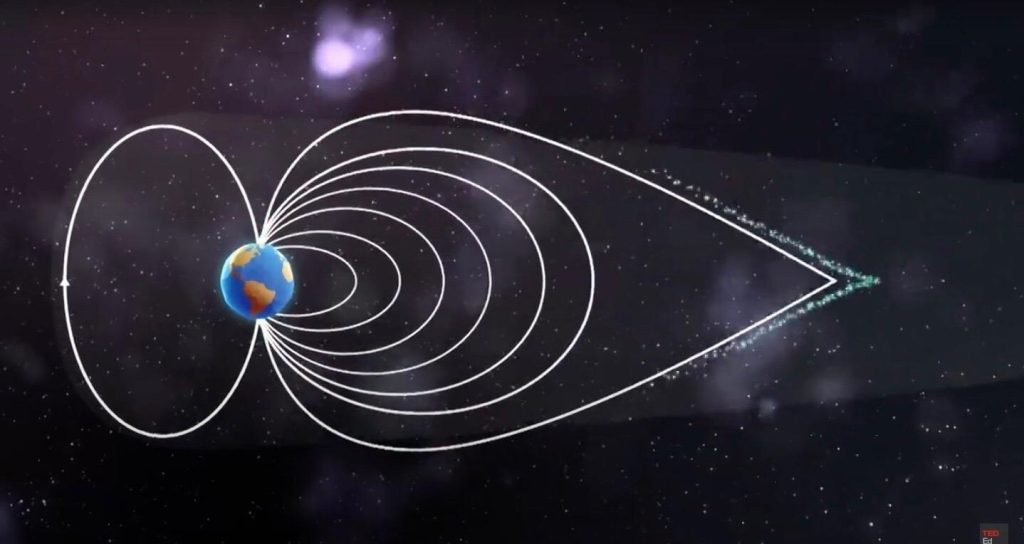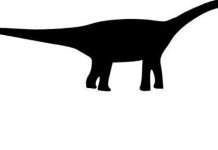The gigantic uniform aurora seen from the ground on the Christmas night of 2022 has been confirmed to be polar rain aurora. This was the first ground-based observation of polar rain aurora. Unlike typical aurora which are driven by the incident electrons stored in the magnetotail of the magnetosphere of the earth, the polar rain aurora is formed by electrons travelling directly from solar corona to polar regions of the earth along open magnetic field lines to culminate in “polar rain” electron precipitation which give rise to optical emissions upon interaction with oxygen and nitrogen atoms in the atmosphere.
The story of aurorae, the colourful dazzling light shows (called Northern lights or aurora borealis in the north pole region and Southern Lights or Aurora Australis in the south pole region) begins in coronal layer of the solar atmosphere. The temperature of this solar atmospheric layer is extremely high. While the temperature of the photosphere layer (which is treated as surface of the sun because this is what we can observe with light) is about 6000 Kelvin, the average temperature of corona is between 1 to 2 million Kelvin due to ‘Coronal Heating Paradox’. Such high temperature makes corona a layer of superheated plasma. Solar wind comprising of highly energetic electrically charged particles (like electrons, protons, alpha particles and heavy ions) continuously emanate from coronal layer in all directions including in the direction of Earth.
The outward journey of the energetic charged particles from sun to the earth is not simple and straightforward. Normally, the ionised particles are deflected by the magnetic field of the earth (magnetosphere) thus life forms and electrical systems on the earth remain unaffected from the harmful effects of the solar wind.
However, in the event of massive ejection of charged particles from the sun as in the case of Coronal Mass Ejection (CMEs), earth’s magnetosphere become overwhelmed and magnetic storm results. The storm stresses the magnetosphere until it snaps back flinging some of the charged particles towards Earth.
The retracting band of the magnetic field drags the electrons in the solar wind down to polar regions where aurorae are observed 100-300 km above the surface in the upper atmosphere. Contribution of protons and other ions in the solar wind in aurora formation is negligible.
Aurora is basically optical emissions from oxygen and nitrogen atoms excited by energetic electrons precipitating from the magnetosphere along the closed magnetic field lines of earth (energetic electron precipitation or EEP refers to deposition of energy of electrons into the atmosphere). The interaction of energetic electrons with oxygen in the atmosphere is responsible for green and red colours whereas interaction with nitrogen leads to production of blue and deep red hues.

Thus, formation of aurora is driven by the incident electrons stored in the magnetotail (the region of the magnetosphere of the earth that is swept by the solar wind into a vast tail in the direction away from the sun). The electrons stored in the magnetosphere get energized by solar wind forcing and then precipitate into the atmosphere in bursts in the polar regions to give rise to aurora.
Polar Rain Aurora
However, rarely, aurorae are formed by electrons travelling directly from solar corona to polar regions of the earth along open magnetic field lines to culminate in “polar rain” electron precipitation. Such electron precipitation is found to be intense when the solar wind density is low. The optical emissions caused by such electrons are weak and the aurora formed is called “polar rain aurora”.
The polar rain aurorae have been observed on few occasions from space by the satellites. However, no case was ever detected by ground-based facilities.
On 25th-26th December 2022, an atypical aurora was captured by the ground-based cameras in the Artic region when the solar wind had nearly disappeared. The aurora observed was uniform and gigantic in size. It did not appear like a typical aurora. A typical polar cap aurora is a colourful dazzling light show displaying dynamic pattern of rainbow-like lights. It may appear as curtains, rays, spirals, or as changing flickers. Theta aurora appears like Greek letter theta (an oval with a line crossing through the centre) when observed from above by satellites. Theta aurorae are also referred as ‘transpolar arcs’ because of appearance of large-scale arcs when seen from above. ‘Sun-aligned arcs.’ are small and dim auroral arcs observed from ground-based observatories. One end of the arcs is directed to the Sun hence called ‘Sun-aligned arcs.’
The aurora observed on the Christmas night in 2022 was smooth, diffused and gigantic in size. It did not look like a typical aurora hence it was thought to be a polar rain aurora. To confirm this, researchers investigated this using satellite-based and ground-based data.
The satellite images showed that the polar cap region was entirely empty in the beginning. The polar cap started to become filled with a faint diffuse aurora on 25th December. Subsequently, almost the entire polar cap region soon became covered by intense but less-structured emissions. This large-scale filling of the polar cap by diffuse aurorae continued for about 28 hours. The intense emission inside the polar cap started to fade on morning 26th December and within a few hours, the structure of the aurora had returned to the normal distribution and the polar cap was empty again.
Polar rain electron precipitation generally occurs in only one hemisphere depending on the orientation of the interplanetary magnetic field (IMF). Simultaneous satellite images showed a complete filling of the polar cap in the Northern Hemisphere while the polar cap of the Southern Hemisphere was empty. This observed interhemispheric asymmetry and the expected orientation of the IMF strongly suggested that the large-scale aurora detected inside the polar cap of the Northern Hemisphere was a polar rain aurora. The interhemispheric asymmetry was also seen in the electron data. Also, the correlation between the timing of the solar wind disappearance and that of the filling of the polar cap was very good.
The optical measurements from ground-based facility in Artic town of Longyearbyen on 25th –26th December showed that high energy electrons (>1 keV) formed the primary component of the electron precipitation. An influx of high energy electrons was also observed by the satellite. As a result, the aurora was visible from the ground as bright greenish emissions.
In an earlier study, it was demonstrated that the polar rain aurora moves anti-sunward at 150 meters/sec. In the case of atypical aurora seen on the Christmas night of 2022, analysis of the cross-sectional optical data indicated that the aurora propagated in the anti-sunward direction however the aurora speed as viewed from the ground was two to three times faster.
Thus, the gigantic uniform aurora visible from the ground on the Christmas night in 2022 was a polar rain aurora. This was first ground-based observation of polar rain aurora, a unique aspect of complex Sun-Earth connection.
***
References:
- Hosokawa, K. et al 2024. Exceptionally gigantic aurora in the polar cap on a day when the solar wind almost disappeared. SCIENCE ADVANCES. 21 June 2024. Vol 10, Issue 25. DOI: https://doi.org/10.1126/sciadv.adn5276
- SWPC, NOAA. Aurora. Available at https://www.swpc.noaa.gov/phenomena/aurora
***




































